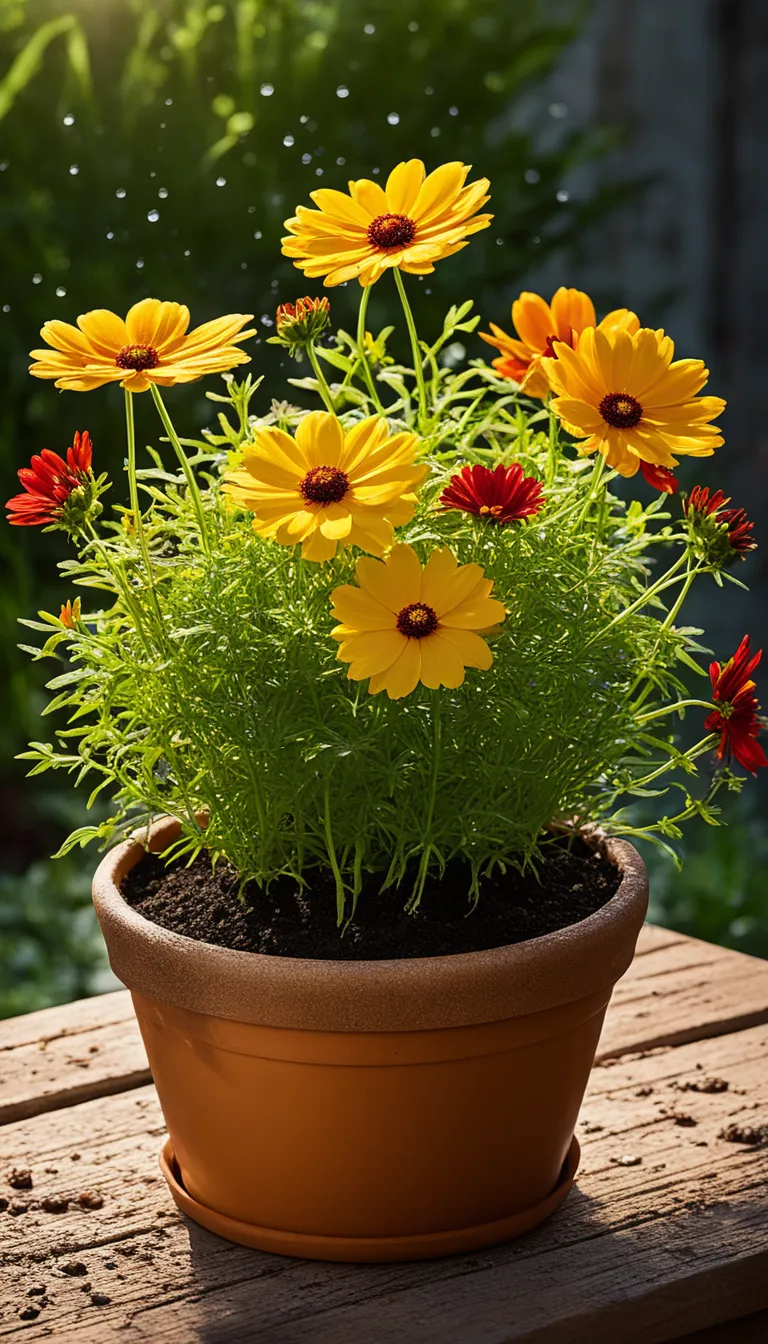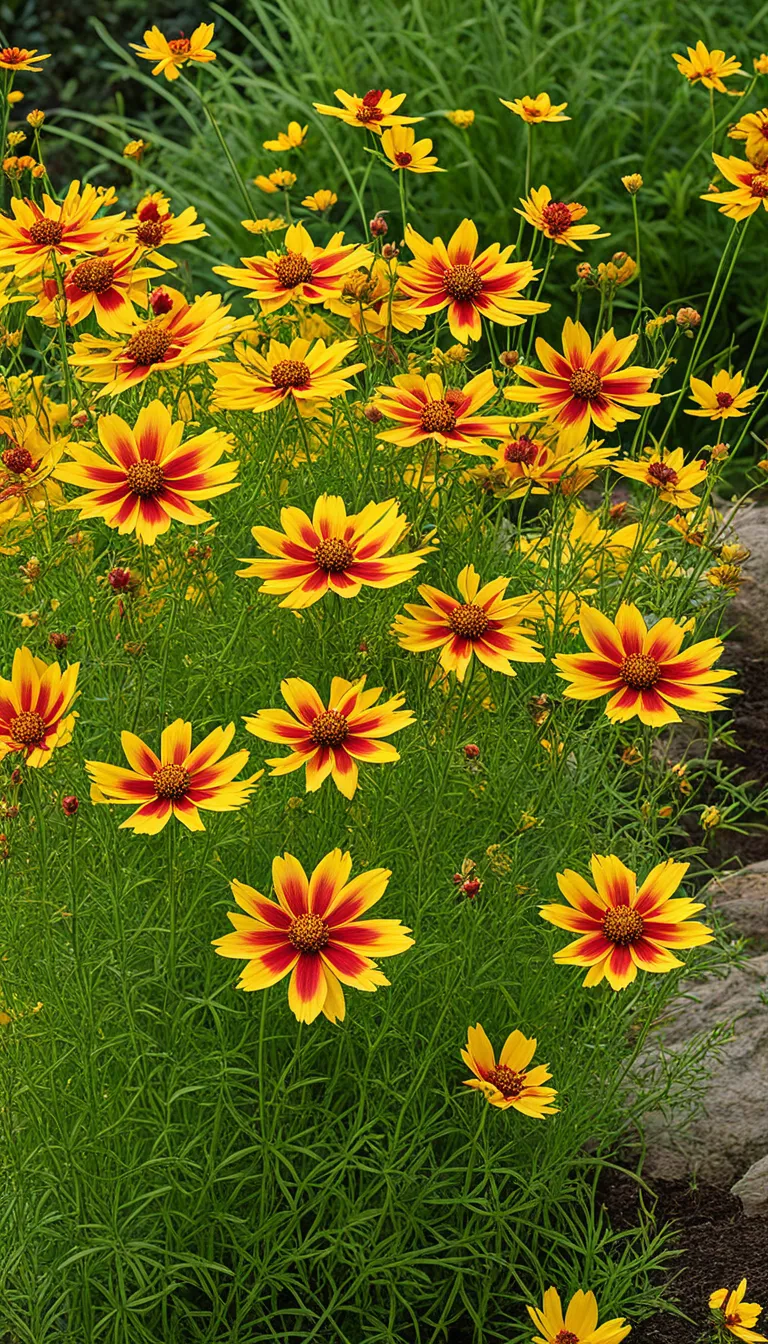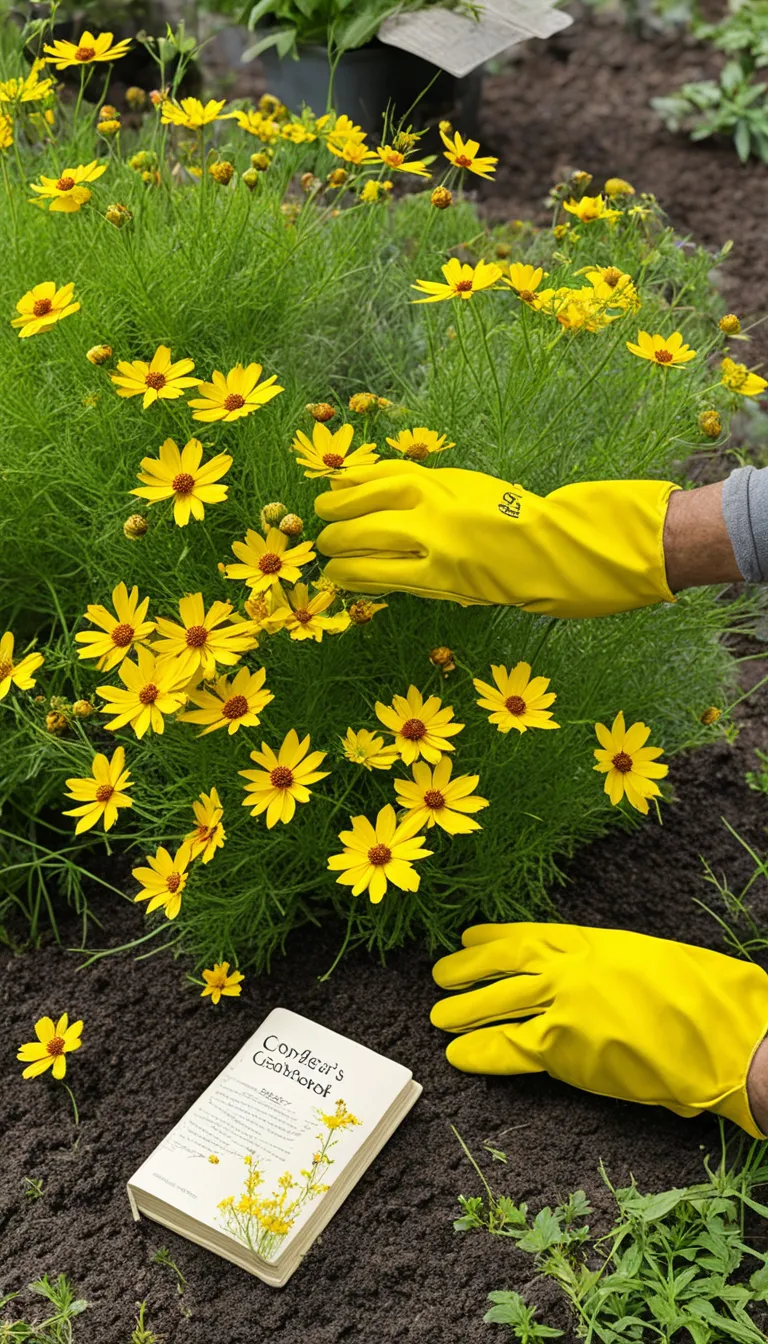Coreopsis, also known as tickseed, is a vibrant and hardy perennial that brightens any garden with its daisy-like blooms. Bursting onto the scene with a surprise explosion of color, these flowers are the unsung heroes of the sunny garden spot. But what makes Coreopsis so special? Let’s dive into the world of these cheerful plants and find out why they’re such a hit with gardeners and pollinators alike.
Imagine a flower that not only captivates the eye but also thrives with minimal fuss. Coreopsis is that bloom! With a variety of species that range from shades of sunny yellow to rich reds, each petal seems to carry its own little sunburst. They’re not just a pretty face, though; Coreopsis plants are renowned for their durability and ability to withstand even the most forgetful gardener’s watering schedule.
Ever heard the saying, “thrives on neglect”? Well, Coreopsis could be its poster child. These plants love a good sunbathing session and aren’t too picky about their soil. But don’t let their easy-going nature fool you. Behind those soft, fluttering petals lies a powerhouse of resilience. They’re like the friend who’s always cheerful and energetic, no matter what life throws their way.
So, are you ready to add a spark of joy and vibrancy to your garden? Coreopsis might just be the ticket to a perennial party that lasts from early summer till the first frost. And the best part? You’ll have plenty of company with butterflies and bees coming to join the fiesta. Now, that’s what we call a blooming success!

What is Coreopsis?
Coreopsis, often celebrated as the tickseed, stands as a testament to resilience and beauty in the plant kingdom. Originating from the prairies of North America, this perennial has captivated gardeners and nature enthusiasts alike. But what exactly makes Coreopsis a garden favorite?
At its core, Coreopsis exudes a cheerful charm, thanks to its bright, daisy-like flowers that dance atop slender stems. It’s not just the aesthetics that make it popular; Coreopsis is a low-maintenance plant, thriving in a variety of climates and soil conditions. This adaptability means that whether you’re in a humid southern state or a cooler northern locale, Coreopsis can be a vibrant addition to your garden.
The secret to its success lies in its hardiness. Coreopsis plants are drought-tolerant once established and can handle a bit of neglect, making them perfect for gardeners who want maximum impact with minimal fuss. Plus, their ability to attract pollinators like bees and butterflies adds an extra layer of life to any garden space.
So, why do gardeners and landscapers adore Coreopsis? Here’s a quick rundown:
- Vibrant Colors: The blooms range from sunny yellow to rich reds, with some varieties even flaunting bi-color petals.
- Extended Blooming: Coreopsis flowers from early summer right through to fall, offering a long-lasting display of color.
- Wildlife Friendly: These flowers are a haven for beneficial insects, playing a crucial role in the local ecology.
- Easy to Grow: Coreopsis is forgiving and will grow in poor soil, requiring little care once established.

How to Care for Coreopsis?
Caring for Coreopsis is as rewarding as it is straightforward. These sun-loving perennials thrive with just a bit of attention and care. Here’s how you can ensure your Coreopsis plants explode with color year after year.
First and foremost, sunlight is crucial. Coreopsis plants need at least 6 to 8 hours of direct sunlight to flourish. So, ask yourself, does your garden spot soak up the sun? If yes, you’re off to a great start!
When it comes to watering habits, Coreopsis is somewhat drought-tolerant. However, for that initial establishment and a robust burst of growth, regular watering is key. How often, you wonder? Let’s dive into a simple watering schedule:
- After planting, water thoroughly and consistently for the first few weeks.
- Once established, water as needed, allowing the soil to dry out slightly between waterings.
- In the heat of summer, you might need to water more frequently, especially if you notice the leaves wilting.
Now, let’s talk soil preferences. Coreopsis isn’t picky, but it does love a good, well-draining soil. A mix rich in organic matter? That’s the ticket to a happy plant. Here’s a quick soil mix recipe:
2 parts garden soil 1 part compost 1 part perlite or sand for drainage
Lastly, don’t forget about deadheading! Snipping off spent flowers not only keeps your Coreopsis looking neat but also encourages more blooms. It’s like a surprise party for your plants, and who doesn’t love a good surprise?
Remember, every garden is unique, and so is every Coreopsis plant. Pay attention to your plants’ needs, and they’ll reward you with a spectacular explosion of color. Happy gardening!

What are the Coreopsis Varieties?
When you dive into the world of Coreopsis, you’ll find a tapestry of colors and forms that can leave any plant enthusiast in awe. Have you ever wondered just how many faces this cheerful flower can wear? Well, let me tell you, the variety is as explosive as a fireworks display! From the sunny ‘Moonbeam’ with its pale yellow petals to the fiery ‘Route 66’ that looks like it’s been dipped in a sunset, the diversity is truly mesmerizing.
Let’s break it down, shall we? Here’s a quick list of some popular Coreopsis varieties that could be the next vibrant addition to your garden:
- Coreopsis verticillata ‘Moonbeam’ – A delicate, lemon-yellow flower that’s as light and airy as a summer breeze.
- Coreopsis grandiflora ‘Sunray’ – Double the petals, double the fun! This variety boasts full, bright yellow blooms that scream ‘look at me!’.
- Coreopsis ‘Route 66’ – A road trip for the eyes, this type features yellow flowers edged with a burst of red.
- Coreopsis ‘Mercury Rising’ – Wine-red flowers that add a touch of sophistication and mystery to your garden palette.
- Coreopsis ‘Zagreb’ – A hardy, needle-leaved variety with a golden-yellow hue that can light up any corner.
Each variety not only brings its own unique splash of color but also its own set of surprises. With such a range, you can mix and match to create a garden display that’s as dynamic and explosive as a grand finale on the Fourth of July. So, are you ready to add some Coreopsis pizzazz to your garden symphony?





